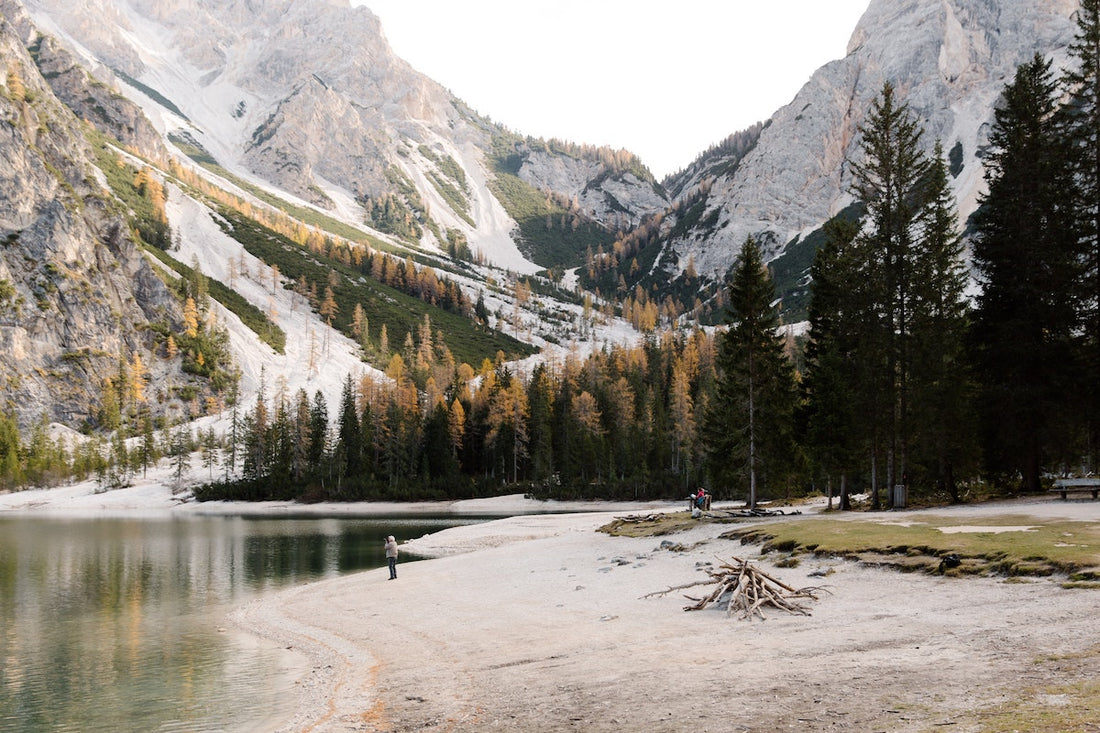While some RVers move south for the winter, others stay to enjoy the glittering snow, tranquil woodlands, and serene parks. Winter RV camping is a great way to get away from the hustle and bustle of summer and relax in the lovely winter outdoors. For the winter camping adventurers, here are a few recommendations to make your experience more enjoyable.
The Trailer Valet line of RVR remote-controlled trailer movers makes the procedure of connecting a trailer to a tow vehicle over snow very easy. Use the RVR5 to pull trailers up to 5,500 pounds, and go heavier if you need to with the RVR9 (up to 9,000 pounds) and the top-of-the-line RVR12 (up to 12,000 pounds). With heavy-duty caterpillar treads that easily move over snow, RVR movers make hitching and repositioning your trailer a breeze. No more worrying about tight camping spaces, either: you can also use the RVR5 to reposition your trailer when you get to the destination to find the best place for your camp. Instead of having to back up your vehicle to the trailer - complicated even under good weather conditions, but more dangerous in snow - the RVR brings the trailer to your car.
During dangerous snowfall weather circumstances, it's critical that you keep a close eye on your speed. It's reasonable that you have a schedule that you're attempting to keep to but when it's snowing outside keeping an eye on your speed will help you prevent mishaps that would otherwise result in a slew of new problems.
You should spend some time familiarizing yourself with driving your rig in clear weather conditions at first because you will get more comfortable driving it and it will be much easier for you later on in any conditions. You'll also want to make sure you know exactly what's inside your trailer. When driving in the snow, a big trailer will not drive as accurately as a smaller truck.
The most apparent first step in trailer camping in the winter is to ensure that you have measures in place to keep the interior warm. If your camper comes with a built-in furnace, chances are it hasn’t been used in a year, so make sure to clear out dirt and debris with compressed air or a soft brush. Check for any damage or blockages in the furnace vents that might prevent air from flowing correctly, and make sure the furnace air return is not blocked.
If you don’t have a furnace, a portable heater that is safe to use indoors works just as well. Look for one that can heat up to 225 square feet. If you're on a budget, you may acquire some inexpensive electric blankets, or just fill some plastic bottles with hot water and lay them in your sleeping bag to maintain a desirable temperature.
Following the above tips you can get yourself ready to enjoy the great wintertime outdoors. As long as you keep yourself warm, and have the proper equipment for trailer moving, towing and driving, you will be able to make the most of your camping experience.
How To Attach, Move and Maneuver Your Trailer Over Snow
The Trailer Valet line of RVR remote-controlled trailer movers makes the procedure of connecting a trailer to a tow vehicle over snow very easy. Use the RVR5 to pull trailers up to 5,500 pounds, and go heavier if you need to with the RVR9 (up to 9,000 pounds) and the top-of-the-line RVR12 (up to 12,000 pounds). With heavy-duty caterpillar treads that easily move over snow, RVR movers make hitching and repositioning your trailer a breeze. No more worrying about tight camping spaces, either: you can also use the RVR5 to reposition your trailer when you get to the destination to find the best place for your camp. Instead of having to back up your vehicle to the trailer - complicated even under good weather conditions, but more dangerous in snow - the RVR brings the trailer to your car.
How To Drive In Snowy Conditions
During dangerous snowfall weather circumstances, it's critical that you keep a close eye on your speed. It's reasonable that you have a schedule that you're attempting to keep to but when it's snowing outside keeping an eye on your speed will help you prevent mishaps that would otherwise result in a slew of new problems.
You should spend some time familiarizing yourself with driving your rig in clear weather conditions at first because you will get more comfortable driving it and it will be much easier for you later on in any conditions. You'll also want to make sure you know exactly what's inside your trailer. When driving in the snow, a big trailer will not drive as accurately as a smaller truck.
How To Keep Yourself Warm
The most apparent first step in trailer camping in the winter is to ensure that you have measures in place to keep the interior warm. If your camper comes with a built-in furnace, chances are it hasn’t been used in a year, so make sure to clear out dirt and debris with compressed air or a soft brush. Check for any damage or blockages in the furnace vents that might prevent air from flowing correctly, and make sure the furnace air return is not blocked.
If you don’t have a furnace, a portable heater that is safe to use indoors works just as well. Look for one that can heat up to 225 square feet. If you're on a budget, you may acquire some inexpensive electric blankets, or just fill some plastic bottles with hot water and lay them in your sleeping bag to maintain a desirable temperature.
Following the above tips you can get yourself ready to enjoy the great wintertime outdoors. As long as you keep yourself warm, and have the proper equipment for trailer moving, towing and driving, you will be able to make the most of your camping experience.
Tags:

